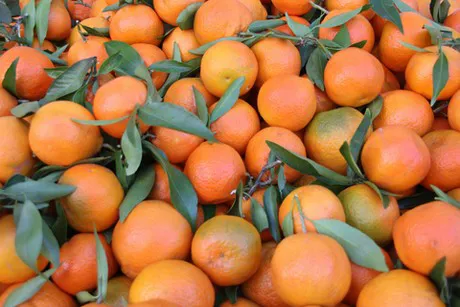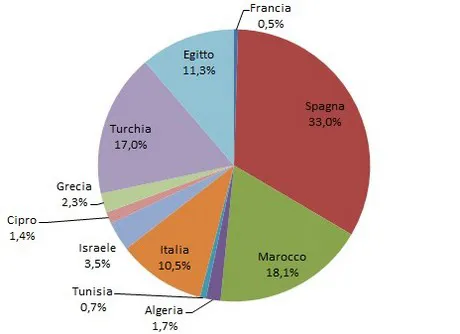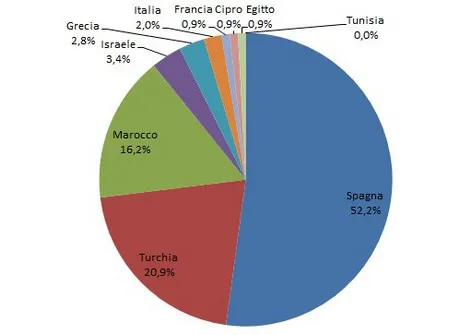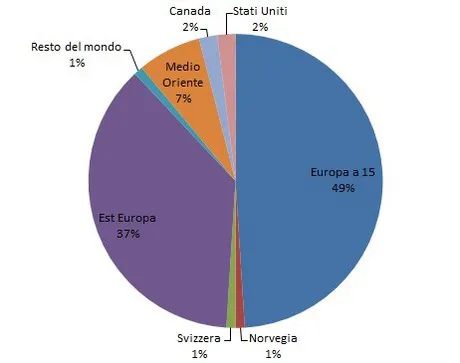
The production
6.4 million tons of easy peelers are expected, i.e. 1.6% more than the previous year and +17.4% more than the 2012/13 season.
Spain will produce the most, with 2 million tons, followed by Morocco (18.1% of the total production) and Turkey (1.09 million tons, 17% of the total).
| Spain | 2,117.1 |
| Morocco | 1,162.3 |
| Turkey | 1,092.1 |
| Egypt | 725 |
| Italy | 672 |
| Israel | 223 |
| Greece | 148 |
| Algeria | 111 |
| Cyprus | 88.6 |
| Tunisia | 46.5 |
| France | 30 |
| Total | 6,415.6 |
Italy will be the fifth main producer after Egypt, producing 672 thousand tons, a little over 10% of the total.

Easy peeler production in the Mediterranean
The season is expected to be excellent also in terms of exports - +4.1% with respect to the previous season at 2.97 million tons. Since 2007/08, exports of this kind of fruit have always been increasing.
Exports from Israel and Turkey should increase by 28 and 15% respectively, followed by France (+21%), Spain (+2.1%) and Greece (+1.4%). The only decrease will be recorded in Italy (-12%) and Cyprus (-37%).
| Spain | 1,550 |
| Turkey | 620.8 |
| Morocco | 480 |
| Israel | 100 |
| Greece | 84 |
| Italy | 58 |
| France | 27 |
| Cyprus | 26.7 |
| Egypt | 25.4 |
| Tunisia | 0.03 |
| Total | 2,971.93 |
Note: data for Morocco and Tunisia concern the 2013/14 season, whereas those for Egypt refer to 2012/13.
The main exporter will be Spain, covering 52.2% of total exports in the Mediterranean area with over 1.5 million tons, followed by Turkey with 620.8 tons (20.9%) and Morocco with 480 tons (16.2%). Italy follows at a great distance with 58 thousand tons (2.0%).

Easy peeler exports in the Mediterranean
Export destinations
In the past season, 49% of easy peeler citrus fruit was shipped to the EU-15, whereas 37% reached Eastern Europe. Another 2% goes to Switzerland and Norway.

Destinations for easy peeler fruits from the Mediterranean
The main importer in the EU-15 was Germany (400 thousand tons), followed by France (375 thousand tons), UK-Ireland (175 thousand tons), Netherlands (less than 125 thousand tons) and Italy (75 thousand tons).
As regards Eastern Europe, in 2013 Russia imported around 450 thousand tons, but that destination is now off limits because of the ban and it is unlikely that other countries in the area could absorb the same amount, as the second and third importer (Poland and Ukraine) barely import 300 tons combined.
